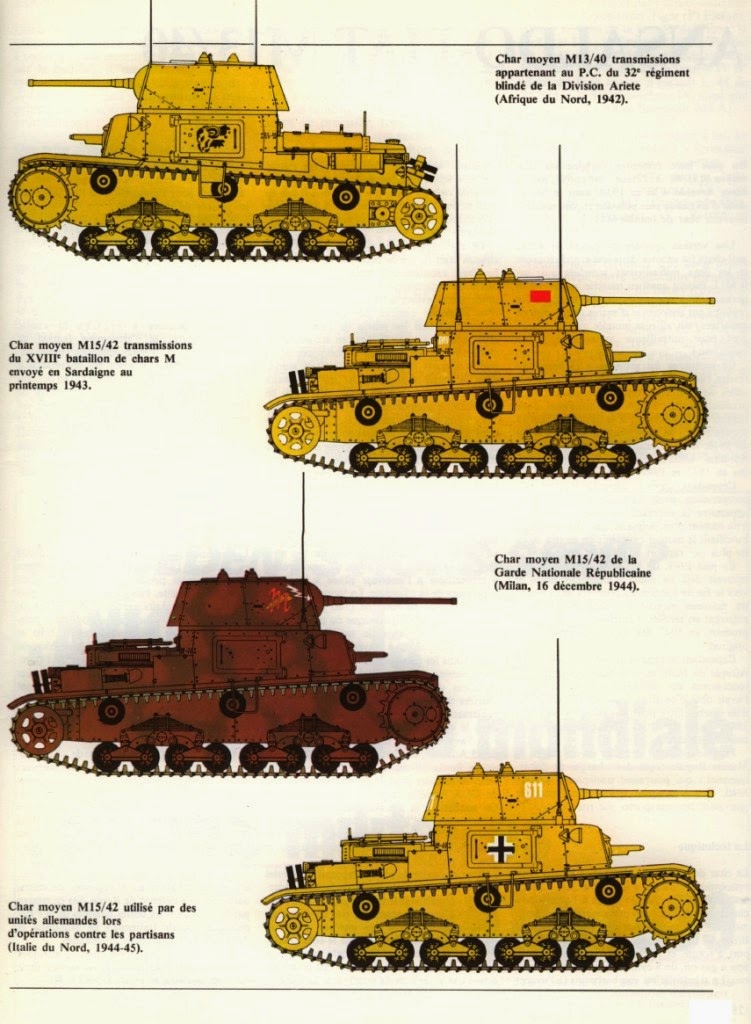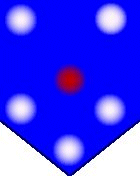A revolutionary design
BT means Bystrochodnij Tankov (Fast Tank). It was indeed a new class of
its own, originally invented and refined in the USA, as the brainchild
of American Engineer Walter J. Christie, which had a tremendous
influence in tank design during the thirties. Christie has observed WWI
tanks in action and the beginnings of US tank postwar development at
home. He had realized how deep was the gap between the fast armored
cars, but with poor off-road capabilities, and the slow, but all-terrain
proved tracked tanks. He devised new ways to cope with this problem,
revolving around power-to-weight ratio and new suspension designs. His
first prototype was ready in 1923, but was rejected by the US Army. He
then developed even faster tanks, equipped with powerful radial aircraft
engines and the acclaimed "Christie" suspension, as well as the concept
of removable tracks. The idea was that, with this new suspension and
the combination of very large rubberized wheels and huge vertical coils,
his model remained operational even after its tracks were disabled,
excessively worn or broken. The tank was also capable to reach the
battlefield by itself, on roads, with its tracks stored on the
mudguards, rather than to be carried by rail. It was displayed on
impressive shows and quickly dubbed by the press "the race tank".
However, the Army only ordered a single prototype for evaluation by the
cavalry corps, the Christie model 1931, but further orders were
cancelled.
- See more at:
http://www.tanks-encyclopedia.com/ww2/soviet/soviet_BT-2.php#sthash.r3MtEi4V.dpuf

A revolutionary design
BT means Bystrochodnij Tankov (Fast Tank). It was indeed a new class of
its own, originally invented and refined in the USA, as the brainchild
of American Engineer Walter J. Christie, which had a tremendous
influence in tank design during the thirties. Christie has observed WWI
tanks in action and the beginnings of US tank postwar development at
home. He had realized how deep was the gap between the fast armored
cars, but with poor off-road capabilities, and the slow, but all-terrain
proved tracked tanks. He devised new ways to cope with this problem,
revolving around power-to-weight ratio and new suspension designs. His
first prototype was ready in 1923, but was rejected by the US Army. He
then developed even faster tanks, equipped with powerful radial aircraft
engines and the acclaimed "Christie" suspension, as well as the concept
of removable tracks. The idea was that, with this new suspension and
the combination of very large rubberized wheels and huge vertical coils,
his model remained operational even after its tracks were disabled,
excessively worn or broken. The tank was also capable to reach the
battlefield by itself, on roads, with its tracks stored on the
mudguards, rather than to be carried by rail. It was displayed on
impressive shows and quickly dubbed by the press "the race tank".
However, the Army only ordered a single prototype for evaluation by the
cavalry corps, the Christie model 1931, but further orders were
cancelled.
http://www.tanks-encyclopedia.com/ww2/soviet/soviet_BT-2.php
A revolutionary design
BT means Bystrochodnij Tankov (Fast Tank). It was indeed a new class of
its own, originally invented and refined in the USA, as the brainchild
of American Engineer Walter J. Christie, which had a tremendous
influence in tank design during the thirties. Christie has observed WWI
tanks in action and the beginnings of US tank postwar development at
home. He had realized how deep was the gap between the fast armored
cars, but with poor off-road capabilities, and the slow, but all-terrain
proved tracked tanks. He devised new ways to cope with this problem,
revolving around power-to-weight ratio and new suspension designs. His
first prototype was ready in 1923, but was rejected by the US Army. He
then developed even faster tanks, equipped with powerful radial aircraft
engines and the acclaimed "Christie" suspension, as well as the concept
of removable tracks. The idea was that, with this new suspension and
the combination of very large rubberized wheels and huge vertical coils,
his model remained operational even after its tracks were disabled,
excessively worn or broken. The tank was also capable to reach the
battlefield by itself, on roads, with its tracks stored on the
mudguards, rather than to be carried by rail. It was displayed on
impressive shows and quickly dubbed by the press "the race tank".
However, the Army only ordered a single prototype for evaluation by the
cavalry corps, the Christie model 1931, but further orders were
cancelled.
- See more at:
http://www.tanks-encyclopedia.com/ww2/soviet/soviet_BT-2.php#sthash.r3MtEi4V.dpuf
A revolutionary design
BT means Bystrochodnij Tankov (Fast Tank). It was indeed a new class of
its own, originally invented and refined in the USA, as the brainchild
of American Engineer Walter J. Christie, which had a tremendous
influence in tank design during the thirties. Christie has observed WWI
tanks in action and the beginnings of US tank postwar development at
home. He had realized how deep was the gap between the fast armored
cars, but with poor off-road capabilities, and the slow, but all-terrain
proved tracked tanks. He devised new ways to cope with this problem,
revolving around power-to-weight ratio and new suspension designs. His
first prototype was ready in 1923, but was rejected by the US Army. He
then developed even faster tanks, equipped with powerful radial aircraft
engines and the acclaimed "Christie" suspension, as well as the concept
of removable tracks. The idea was that, with this new suspension and
the combination of very large rubberized wheels and huge vertical coils,
his model remained operational even after its tracks were disabled,
excessively worn or broken. The tank was also capable to reach the
battlefield by itself, on roads, with its tracks stored on the
mudguards, rather than to be carried by rail. It was displayed on
impressive shows and quickly dubbed by the press "the race tank".
However, the Army only ordered a single prototype for evaluation by the
cavalry corps, the Christie model 1931, but further orders were
cancelled.
- See more at:
http://www.tanks-encyclopedia.com/ww2/soviet/soviet_BT-2.php#sthash.r3MtEi4V.dpuf







































































































